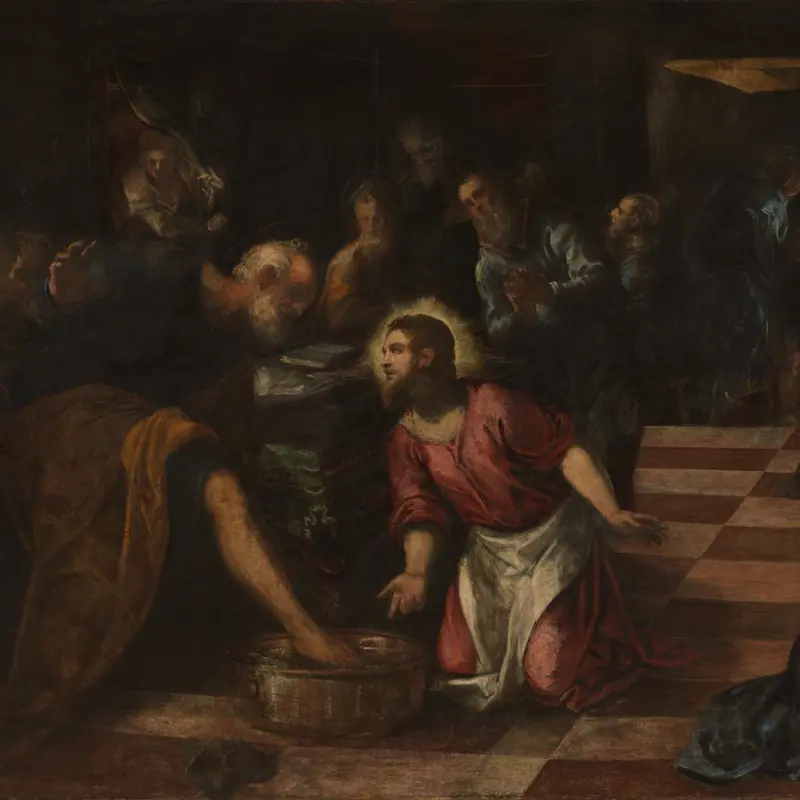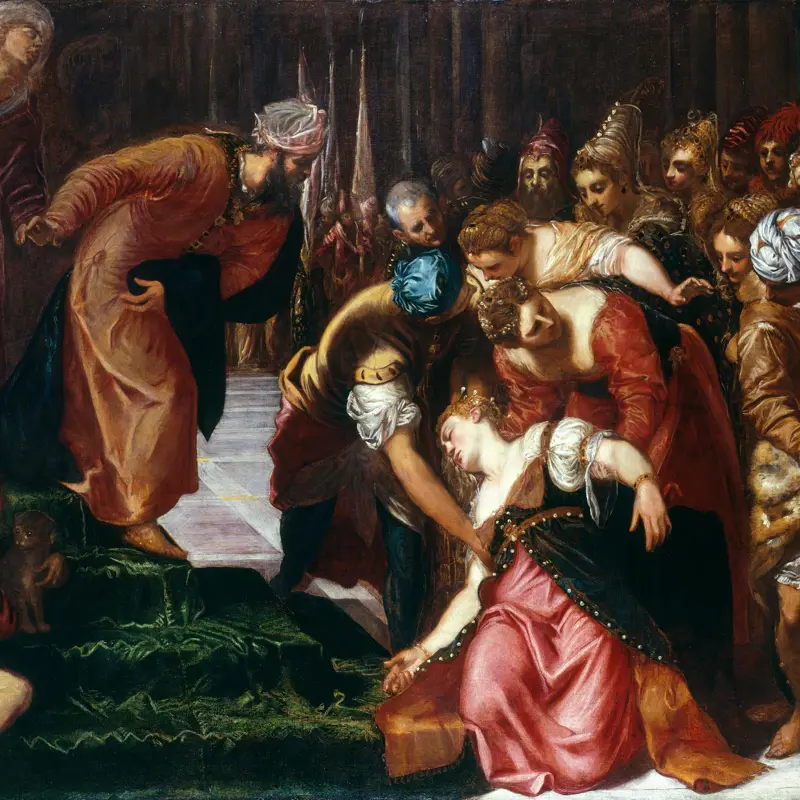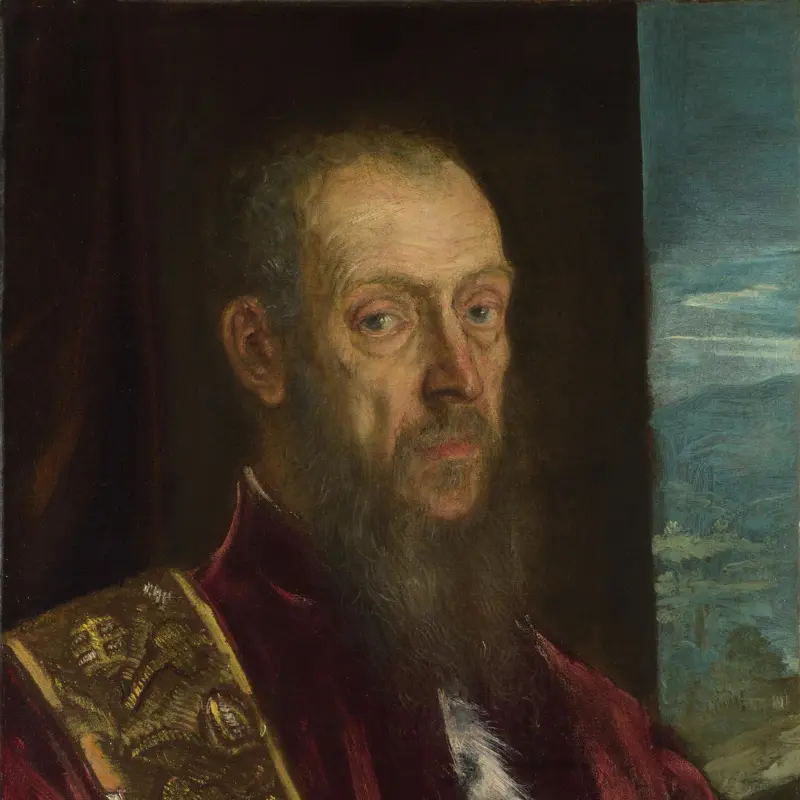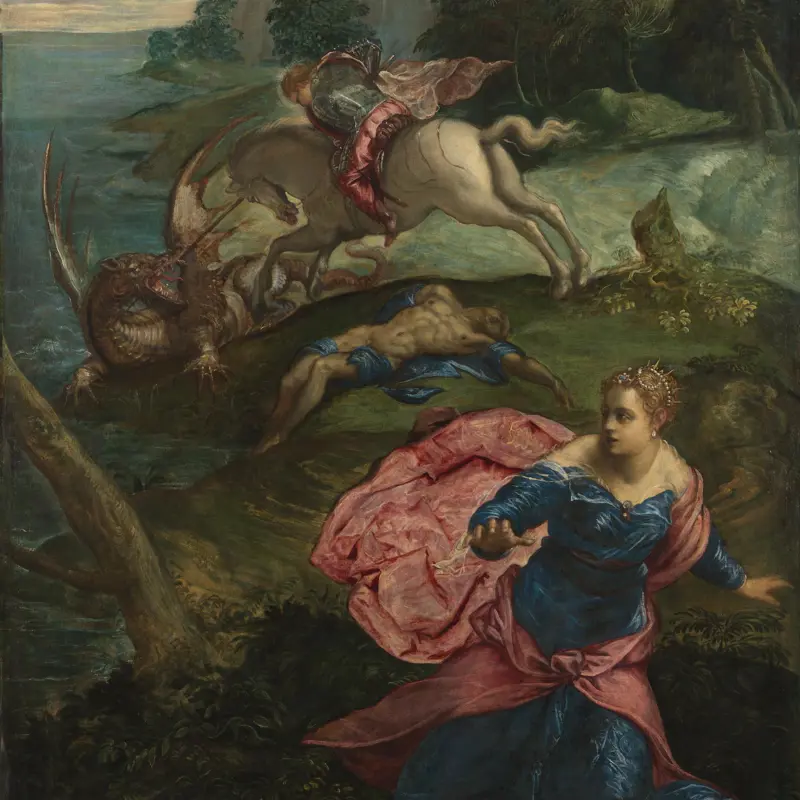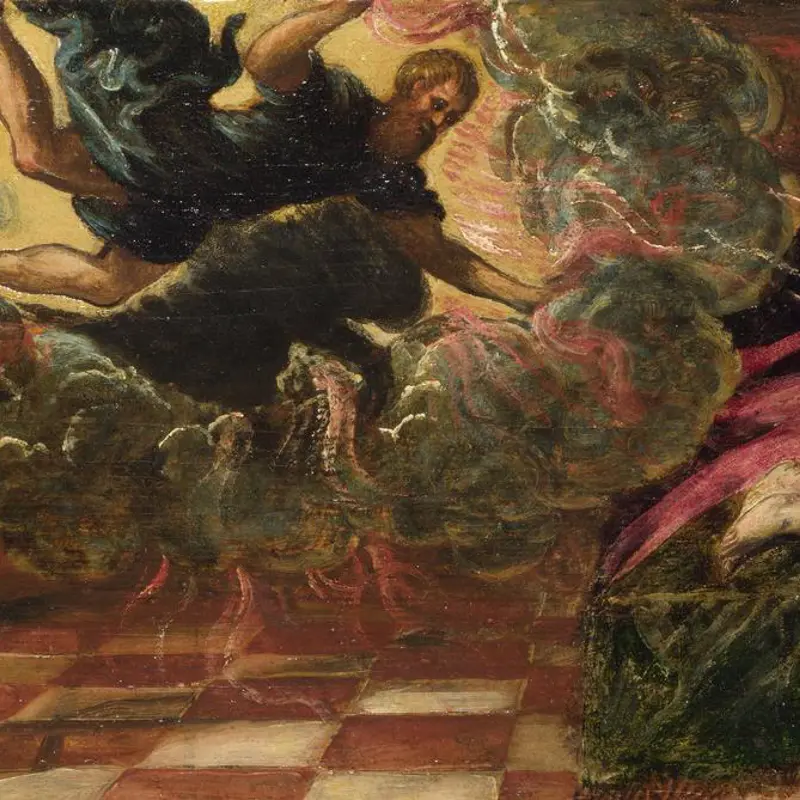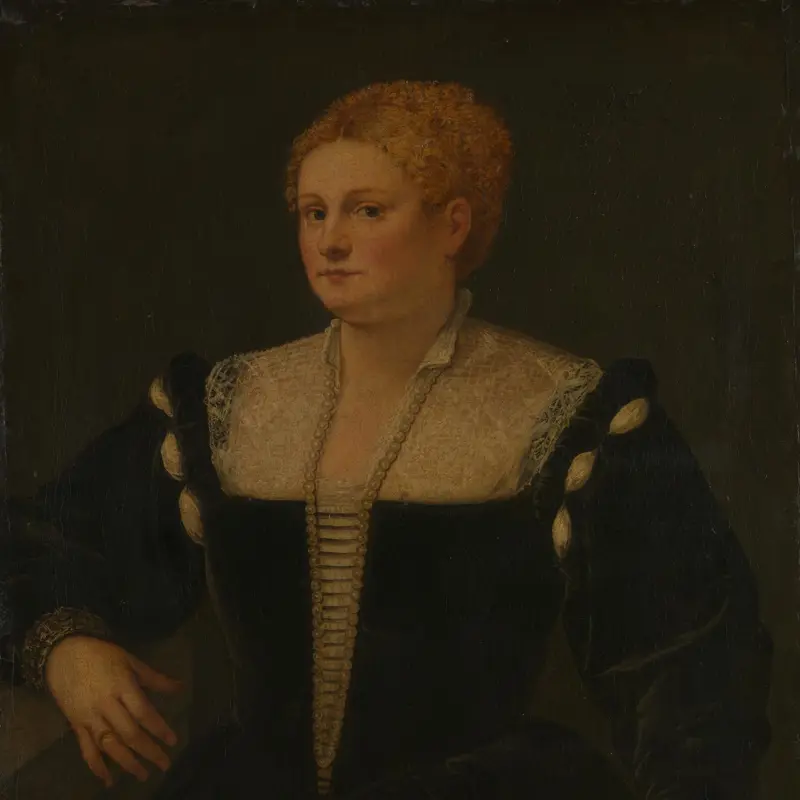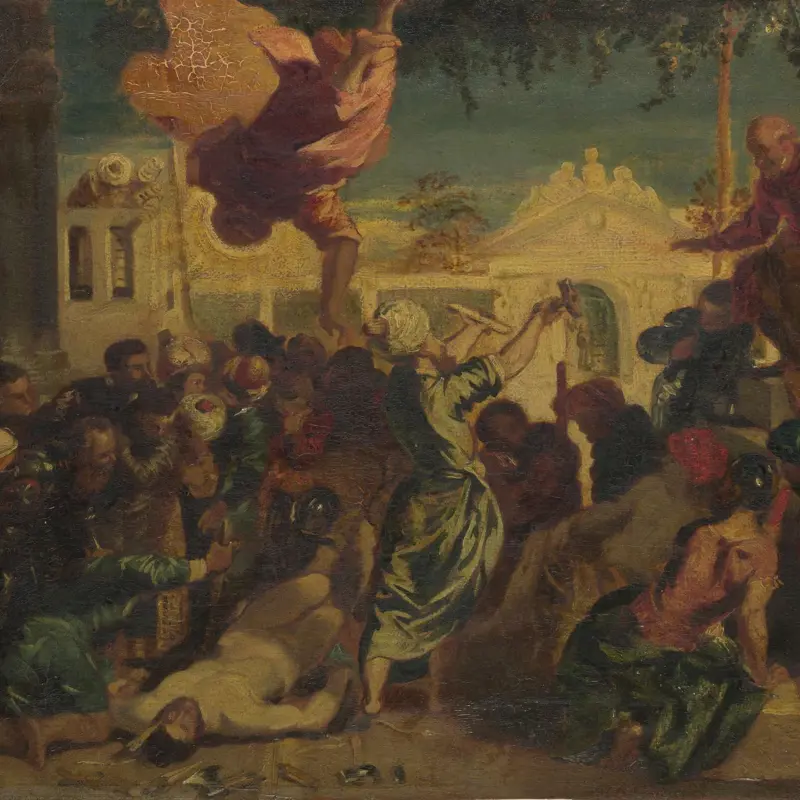Follower of Jacopo Tintoretto, 'The Nativity', about 1590
About the work
Overview
Mary and Joseph kneel before the baby Jesus, who sleeps wrapped in a woven basket of sticks and straw. Joseph, the elderly carpenter, touches his rough fingers together in prayer. He holds a stick like those from which the basket is made, and two knives in a sheath lie in his lap. Mary presses her hands over her heart.
The stable is made of thatch over crude timber supports and the baby’s blanket is ragged and patched. Perhaps Joseph has cut the sticks with his knife and woven the simple wicker basket himself. A long swaddling cloth with a cord tie, in which the baby will be tightly bound, has been hung up to dry. The fresh cuts on the ends of the sticks are perilously sharp for a baby’s bed and, together with the knives and shroud-like swaddling cloth, hint at the pain of Christ’s Passion (his torture and crucifixion) that lies ahead.
Key facts
Details
- Full title
- The Nativity
- Artist
- Follower of Jacopo Tintoretto
- Artist dates
- about 1518 - 1594
- Date made
- about 1590
- Medium and support
- oil on canvas
- Dimensions
- 95.3 × 118 cm
- Acquisition credit
- Presented by Sir Henry Howorth through the Art Fund, in memory of Lady Howorth, 1922
- Inventory number
- NG3647
- Location
- Not on display
- Collection
- Main Collection
- Previous owners
Provenance
Additional information
Text extracted from the ‘Provenance’ section of the catalogue entry in Nicholas Penny, ‘National Gallery Catalogues: The Sixteenth Century Italian Paintings’, vol. 2, ‘Venice 1540–1600’, London 2008; for further information, see the full catalogue entry.
Bibliography
-
1856Christie & Manson, Catalogue of the Whole… Collection of Pictures… formed by Thomas Emmerson Esq., Deceased, London, 21 May 1856
-
1884Christie, Manson & Woods, Catalogue of the Valuable Collection of Ancient and Modern Pictures of Mr William Cox, of 57 Pall Mall, London, 8 February 1884 - 18 February 1884
-
1922C. Holmes, 'Recent Additions to the National Gallery', The Burlington Magazine, XLI, 1922, pp. 76-87
-
1923London, National Gallery Archive, dossier for NG 3647: National Gallery: Trafalgar Square and Millbank Directors' Reports, 1923
-
1929C.H.C. Baker, National Gallery, Trafalgar Square: Catalogue, London 1929
-
1932National Gallery, National Gallery: Trafalgar Square and Millbank Directors' Reports, 1931, London 1932
-
1958R. Pallucchini, 'Un'altra opera giovanile del Tintoretto', Arte veneta, 1958, pp. 202-3
-
1971M. Levey, The Seventeenth and Eighteenth Century Italian Schools, London 1971
-
1982R. Pallucchini and P. Rossi, Tintoretto: Le opere sacre e rofane, Milan 1982
-
1986Levey, Michael, National Gallery Catalogues: The Seventeenth and Eighteenth Century Italian Schools, London 1986
-
2001
C. Baker and T. Henry, The National Gallery: Complete Illustrated Catalogue, London 2001
-
2008Penny, Nicholas, National Gallery Catalogues: The Sixteenth Century Italian Paintings, 2, Venice, 1540-1600, London 2008
About this record
If you know more about this work or have spotted an error, please contact us. Please note that exhibition histories are listed from 2009 onwards. Bibliographies may not be complete; more comprehensive information is available in the National Gallery Library.

